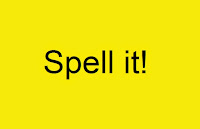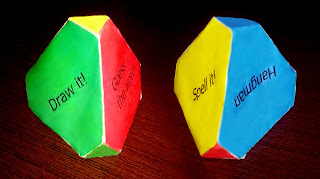 Today, 29 April 2015, the students of 4th
grade of Primary School, have recorded the story that they created the other
day. It has been a great experience, and I've checked how motivated they are
about this activity, since is something totally new for them.
Today, 29 April 2015, the students of 4th
grade of Primary School, have recorded the story that they created the other
day. It has been a great experience, and I've checked how motivated they are
about this activity, since is something totally new for them.
At first, they were a little bit nervous,
because they didn’t know what they had to do exactly, but finally we have had a
lot of fun while recording the voices because they started to laugh suddenly after
saying something wrong, etc.
As, they still have some difficulties to pronounce
most of the words in English, I’ve written them their sentences in a paper with
the Spanish phonetic transcription, so that it would be easier for them to say.
Another problem that I've perceived has been the lack of intonation while reading
the text. To solve this problem, I read first the full sentence with the
correct intonation, and after they repeated it. So, the results have been very positive,
and I think that the final project is very satisfactory.
Initially, my idea was to do devote a session
to learn how to create the video all together using the Windows Movie Maker, introducing this way the use of the Information and Communications Theology to the
activity. But, as we don’t have enough time to do this, I’ve had to make the video
by myself. In my opinion, this is a pity, because the activity would have been
very complete by doing this, but the managing of the time is not in my hands as
I’m only an intern. However, to introduce a little bit about the use of the ICT, I’ve
taught each student the steps they have to follow to record the voice and to
save it in different formats.
After recording the voices, I have handed them a paper
with the sentence they had narrated where they had to illustrate the scene, to join
the pictures with the voices and make the final video.
And… this is the result of all this process. The
students of 4th grade of Primary and I hope that you enjoy it! ☺♡
























